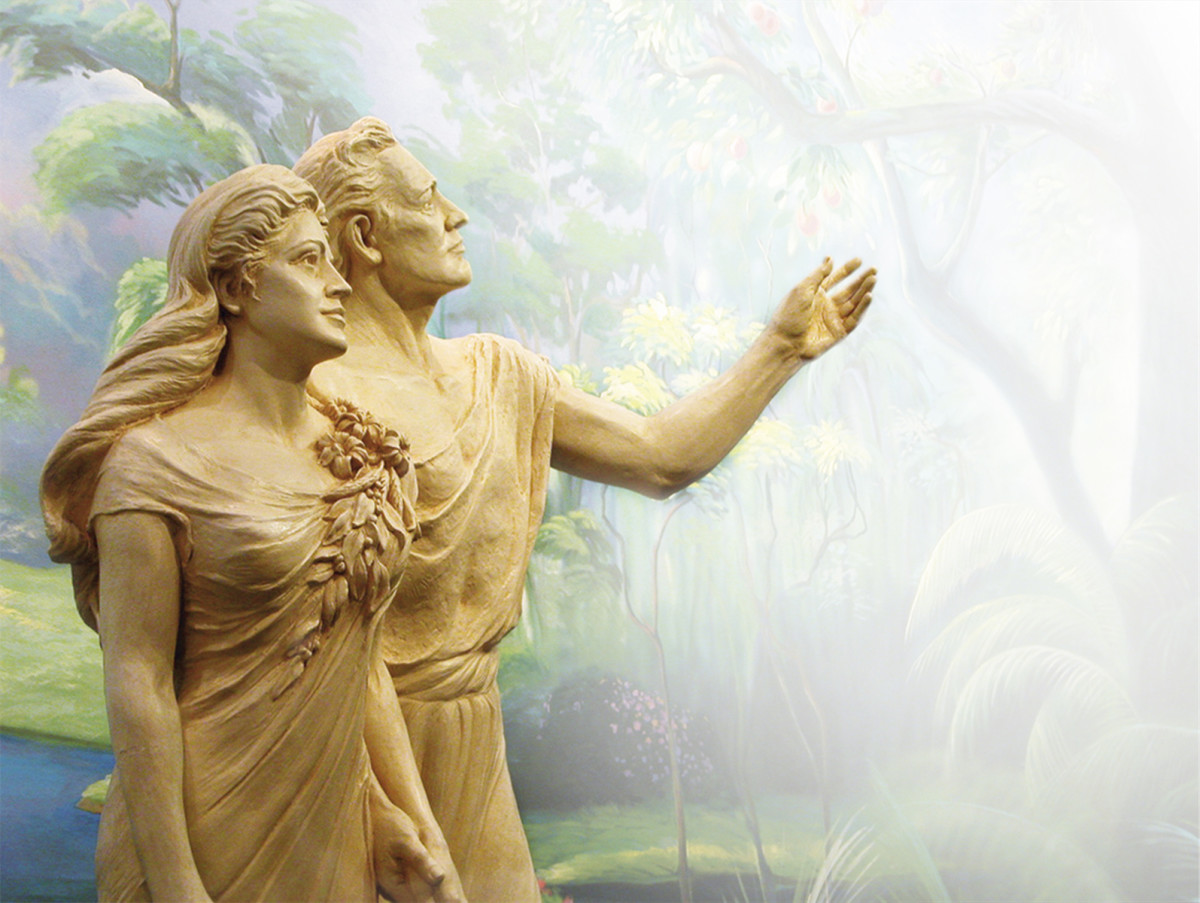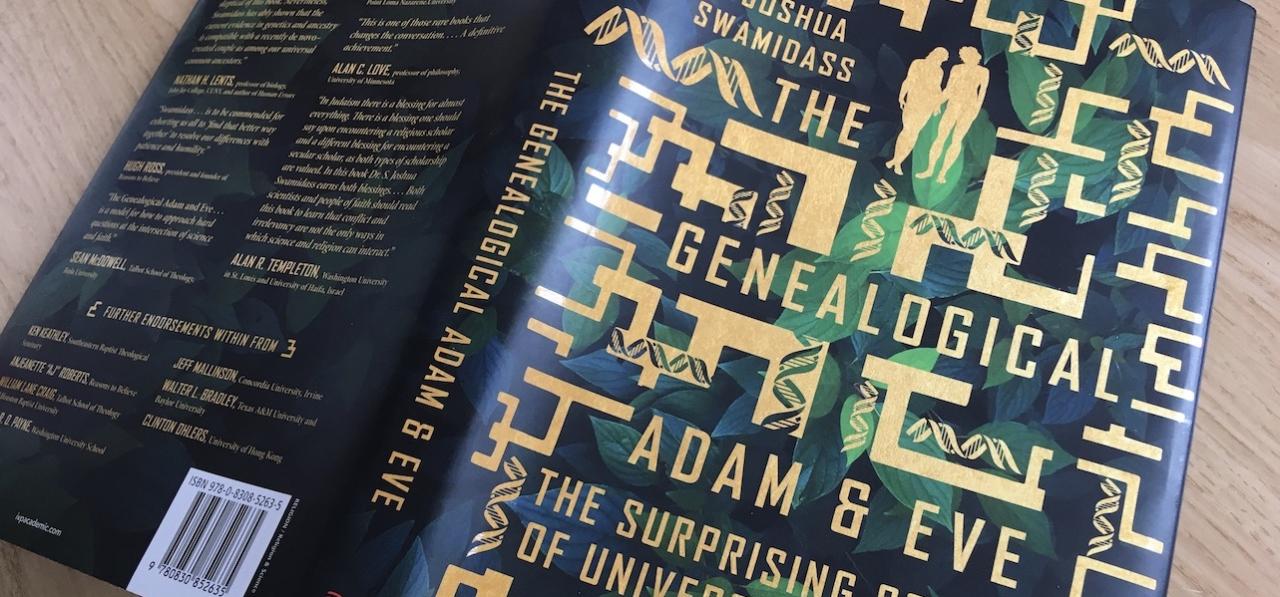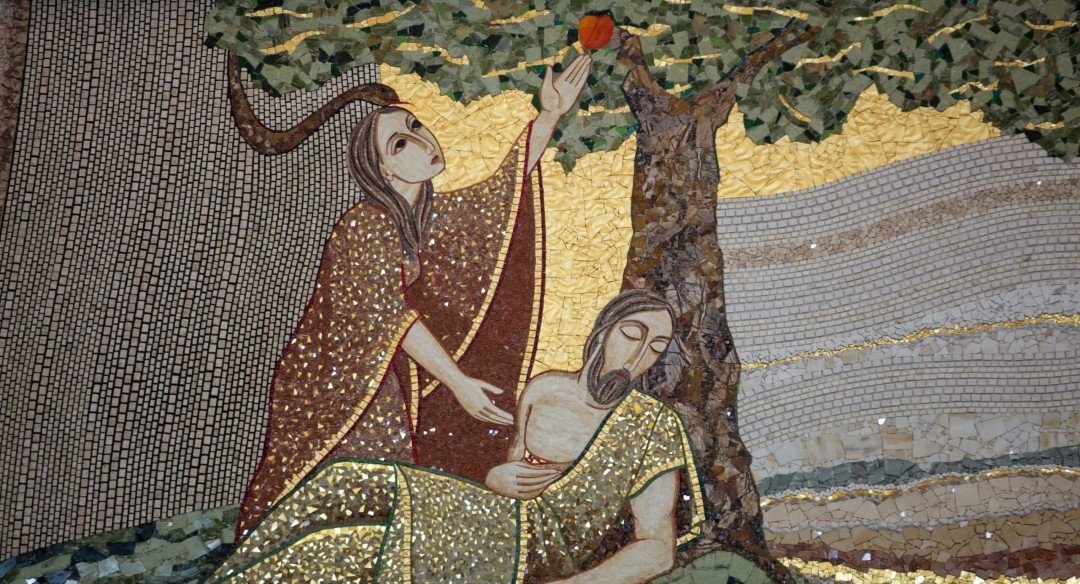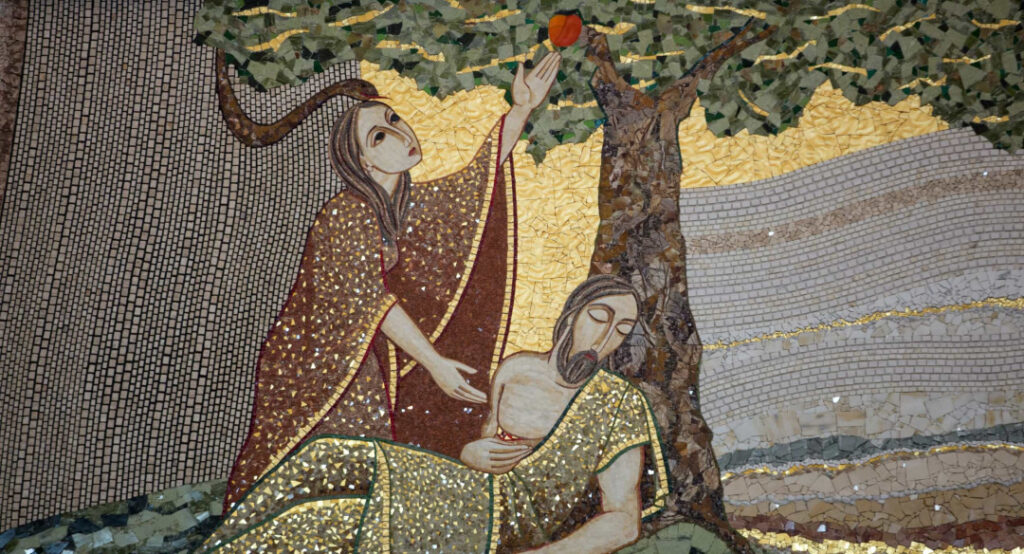adam and eve adam the ghost sets the stage for a fascinating exploration of how the timeless narrative of Adam and Eve transcends its biblical origins to intertwine with the realm of the supernatural. This story, rich in cultural significance, has influenced various interpretations across different societies, revealing the deep connections between this iconic duo and ghostly figures found in folklore. As we delve into the historical context and symbolism of Adam as a ghost, we uncover layers of meaning that challenge our perceptions of life, death, and the human experience.
From early renditions of the Adam and Eve tale to the portrayal of ghostly beings in religious texts, the narrative showcases the diverse ways cultures understand existence beyond the physical realm. By examining modern ghost stories and artistic representations, we not only highlight the enduring legacy of these characters but also reflect on humanity’s ongoing struggle with themes of morality and redemption.
Historical Context of Adam and Eve
The narrative of Adam and Eve is one of the most enduring and influential stories in human history, serving as a foundational myth for various cultures and religions. Originating from ancient texts, primarily the Hebrew Bible, the tale explores themes of creation, temptation, and the consequences of disobedience. Its significance extends beyond religious teachings, influencing art, literature, and societal norms across different civilizations.
The early interpretations of the Adam and Eve story have led to diverse implications on society, shaping moral and ethical frameworks throughout history. Early theologians viewed Adam and Eve’s actions as the origin of sin, which instigated debates about free will and human nature. This tale has been reflected in numerous cultural contexts, often emphasizing the duality of human existence—innocence versus experience, obedience versus rebellion. Such interpretations have not only influenced religious doctrines but have also permeated laws and social hierarchies, particularly regarding gender roles and moral conduct.
Connections Between Adam and Eve and Ghostly Figures in Folklore
The story of Adam and Eve has several intriguing connections to ghostly figures found in folklore. These connections highlight the narrative’s themes of loss, regret, and the lingering presence of the past. Ghostly figures often embody the unresolved issues stemming from humanity’s choices, much like Adam and Eve’s expulsion from Eden serves as a metaphysical boundary between innocence and experience.
In various cultures, spirits or apparitions manifest as reminders of past actions and their consequences. The relationship between Adam and Eve and these ghostly figures can be seen in several ways:
- Symbolism of the Forbidden: Just as Adam and Eve faced the consequences of their disobedience, ghostly figures often represent the haunting nature of forbidden knowledge or actions.
- Consequences of Choice: Both narratives explore the repercussions of choices made, with ghosts acting as reminders of lost opportunities and unresolved conflicts.
- Transitory States: Adam and Eve’s transition from paradise to the mortal realm parallels the existence of ghosts as beings caught between worlds, symbolizing the human condition of longing and loss.
The interplay between the Adam and Eve narrative and ghostly figures in folklore emphasizes the narrative’s complexity. It serves as a lens through which humanity can explore the consequences of its actions, the nature of existence, and the deep-seated fears and hopes surrounding mortality and legacy. The resonance of these themes continues to manifest in literature, art, and cultural traditions, reflecting the timeless relevance of the Adam and Eve story.
The Concept of Ghosts in Religious Texts
Religious texts across various cultures and belief systems provide intriguing insights into the concept of ghosts and the afterlife. These texts often depict ghosts as remnants of the deceased who linger on Earth, serving various purposes, from warning the living to seeking resolution for unfinished business. The interpretation of these spirits can illuminate the moral and ethical views of the respective religions regarding life and death.
The perception of ghosts varies significantly among different religions. In many traditions, ghosts are seen as manifestations of the souls of the deceased, while in others, they represent a bridge between the material and spiritual worlds. Historical and cultural context influences these beliefs, shaping how communities understand life after death and spiritual existence.
Comparative Analysis of Ghostly Figures in Religious Texts
Exploring ghostly figures in religious texts reveals both unique and shared characteristics across different faiths. Below are some notable examples along with their meanings within their respective contexts:
- Christianity: The Bible presents various instances of spiritual beings, such as the ghost of Samuel in the First Book of Samuel, who appears to King Saul. This encounter signifies the consequences of disobedience and the quest for divine counsel, illustrating the belief in the afterlife as a realm where souls may still exert influence.
- Islam: In Islamic theology, the concept of ‘jinn’ can sometimes overlap with ghostly perceptions, especially in stories of the deceased visiting the living. The jinn are believed to inhabit a parallel realm and can interact with humans, reinforcing the belief in an unseen spiritual world that affects earthly life.
- Buddhism: Ghosts, known as ‘pretas,’ are depicted in Buddhist texts as spirits suffering from insatiable cravings. The existence of pretas reflects the consequences of unwholesome actions in life, illustrating the Buddhist view of karma and rebirth.
- Hinduism: In Hindu texts, spirits of the ancestors, known as ‘pitrs,’ are honored through rituals, suggesting that the souls of the deceased remain connected to the living. This ongoing relationship emphasizes the cyclical nature of life, death, and rebirth in Hindu beliefs.
The ghost of Adam and Eve can be seen as a unique entity within this context. Unlike typical spectral figures seeking closure or redemption, their ghost serves as a profound symbol of humanity’s fall and the complexities of moral existence.
In comparison to other prominent ghosts, such as the vengeful spirits in Eastern traditions or the sorrowful apparitions found in Western literature, the ghost of Adam and Eve embodies the universal themes of temptation, consequence, and the quest for understanding. The narratives surrounding them highlight the shared human experience of grappling with moral dilemmas and the search for spiritual enlightenment, making their legacy a powerful reflection of the interconnectedness of life and death within religious discourse.
Symbolism of Adam as a Ghost

The representation of Adam as a ghost carries profound symbolism in various literary works, intertwining themes of loss, redemption, and the exploration of human consciousness. This ghostly interpretation reflects on humanity’s inherent struggles and aspirations, providing a lens through which to examine the character’s enduring legacy. The portrayal of Adam in this spectral form serves to highlight the complexities of existence, echoing the sentiments of loss and the pursuit of salvation.
The concept of Adam as a ghost can be analyzed through several key themes and literary examples that illuminate his symbolic weight. This representation often signifies a haunting presence, one that embodies the remnants of past mistakes and the longing for redemption. The ghostly figure of Adam serves as a reminder of the primordial sin and the consequences that ripple through time, affecting both individual and collective human experience.
Loss and Redemption Themes, Adam and eve adam the ghost
In literature, the themes of loss and redemption associated with Adam as a ghost manifest in various narratives, showcasing the character’s duality as both a fallen being and a potential savior. The following points examine how these themes are articulated in different works:
- Literary Exploration of Loss: Adam’s ghostly presence often symbolizes the profound sense of loss that accompanies the fall from grace. For example, in John Milton’s “Paradise Lost,” Adam’s remorse after the transgression reflects the deep emotional and spiritual void created by his actions, illustrating the weight of his choices.
- Yearning for Redemption: Many interpretations emphasize Adam’s ghost as an entity seeking redemption. In works like “The Silmarillion” by J.R.R. Tolkien, parallels can be drawn where Adam’s struggles echo the overarching narrative of hope and the possibility of regaining lost paradise through acts of courage and sacrifice.
- Collective Human Experience: Adam’s ghost serves as a universal symbol of humanity’s quest for redemption. His experiences resonate with readers, highlighting the introspective journey that many undertake in seeking forgiveness and understanding in the wake of their own failures.
The psychological implications of interpreting Adam as a ghostly figure also merit consideration. This perspective invites an exploration of the human psyche, revealing deeper insights into our understanding of existence and the moral dilemmas we face.
Psychological Implications of Ghostly Representation
Viewing Adam as a ghost opens up a rich tapestry of psychological interpretations, linking his spectral existence to fundamental human experiences of guilt, regret, and the desire for transformation. This ghostly figure prompts contemplation of the following aspects:
- Internal Conflict: Adam’s ghost can symbolize the internal struggles individuals face as they grapple with their own moral failings. This reflection resonates with a broader audience, inviting readers to confront their own ghosts—those memories and choices that linger long after they are made.
- Existential Reflection: The ghost of Adam compels individuals to examine their purpose and existence within a moral framework. It evokes questions about identity and accountability, as characters and readers alike search for meaning in the aftermath of loss.
- Transformation and Healing: Adam’s spectral representation often embodies the potential for transformation. By facing his past, Adam’s ghost encourages a journey towards healing, suggesting that redemption is possible through facing one’s inner demons and learning from the past.
The symbolism of Adam as a ghost is multifaceted, deeply embedded in the themes of loss and redemption, and rich with psychological implications. This exploration enhances our understanding of the human condition and continues to resonate across diverse literary landscapes.
Ghost Stories Inspired by Adam and Eve: Adam And Eve Adam The Ghost
The narrative of Adam and Eve has transcended its biblical origins, influencing various aspects of culture, including literature and folklore. The haunting elements of their story—temptation, loss, and the consequences of choice—have inspired modern ghost stories that reimagine these ancient figures in eerie and thought-provoking ways. This connection between the archetypal couple and ghostly manifestations reveals deeper cultural and psychological themes that remain relevant today.
The concept of Adam and Eve as spectral entities allows for rich storytelling possibilities, often exploring themes of regret, longing, and the search for redemption. These ghost stories tap into the foundational narrative of humanity, where the shadows of past choices linger on in the present. Below are notable examples of modern ghost stories that draw inspiration from the Adam and Eve narrative, highlighting their cultural impact.
Examples of Fictional Works Featuring Adam and Eve as Ghostly Characters
Several fictional works have creatively adapted the figures of Adam and Eve into ghostly narratives. These stories often reflect on the consequences of their actions and the enduring nature of their legacy:
- “The Garden” by John Connolly – This short story interweaves the tale of Adam and Eve with ghostly figures who wander the remnants of Eden, haunted by their choices and the loss of paradise.
- “Eden’s Ghost” by T.W. Brown – This novel presents Adam and Eve as spirits trapped in a modern-day setting, struggling with the repercussions of their original sin while influencing the lives of contemporary characters.
- “A Ghost Story” by Mark Twain – In this comedic tale, Twain plays with the biblical context as Adam and Eve’s spirits interact with the world of the living, providing a humorous yet poignant reflection on their eternal plight.
- “Ghosts of Eden” by Andrew McCarthy – This novel explores the ghostly manifestations of Adam and Eve in a contemporary setting, where their spirits help guide and challenge the descendants of humanity.
The cultural impact of these ghost stories lies in their ability to resonate with contemporary audiences. They serve as reminders of the moral dilemmas faced by humanity, allowing readers to reflect on their own choices in light of the archetypal challenges represented by Adam and Eve. Furthermore, these stories often evoke a sense of nostalgia for a lost paradise, prompting discussions about the nature of human existence and the search for meaning beyond the grave.
These adaptations not only contribute to the literary landscape but also offer a fresh perspective on the enduring influence of the original biblical tale. The ghostly reinterpretations of Adam and Eve reveal the complexity of their characters, showing that even in death, their legacy continues to haunt and shape the human experience.
Artistic Representations of Adam and Eve as Ghosts

Artistic interpretations of Adam and Eve as ghosts have emerged as a compelling theme throughout history, reflecting the complex interplay between spirituality, humanity, and the supernatural. These representations often explore the duality of existence—life and death, physical and ethereal, innocence and guilt. They serve not only as visual narratives but also as cultural commentaries on the nature of sin, redemption, and the afterlife.
Famous artists have captured the essence of Adam and Eve in ghostly forms, utilizing various techniques and mediums to convey deeper meanings. Their works often illustrate the tension between earthly life and the spiritual realm, revealing how societal views on ghosts and spirituality have evolved over time. Below are notable examples and the artistic significance behind them.
Famous Artistic Depictions of Ghostly Adam and Eve
The theme of Adam and Eve as ghosts has inspired numerous works across different art forms. Noteworthy examples include:
1. “The Fall of Man” by Hans Baldung Grien (1510) – This painting portrays Adam and Eve in their moment of temptation, but subtle ghostly motifs emerge through the use of translucent veils and shadowy figures surrounding them, suggesting their imminent fall from grace and the haunting consequences of sin.
2. “The Expulsion from Paradise” by Masaccio (1425) – In this fresco, Adam and Eve are depicted in a state of despair as they are cast out of Eden. The haunting expressions on their faces, combined with the starkness of the background, create a ghostly atmosphere that reflects their loss of innocence and the haunting nature of their actions.
3. “Adam and Eve” by Pablo Picasso (1955) – Picasso reinterprets the iconic figures with a ghostly abstraction, using fragmented forms and muted colors. The disjointed representation evokes feelings of alienation and loss, suggesting a ghostly presence lingering in the memories of paradise.
4. “Eve” by Alberto Giacometti (1950) – Giacometti’s elongated sculptures embody a ghostly essence through their fragile forms. Eve’s figure, standing alone, conveys a sense of haunting solitude, reflecting the spiritual and existential aspects of her character.
5. “Ghost of Adam and Eve” by Kiki Smith (1997) – This contemporary work features ethereal representations of the biblical figures, emphasizing their spectral qualities. Smith’s use of translucent materials evokes the fluidity of life and spirit, challenging traditional narratives associated with Adam and Eve.
The exploration of these artistic portrayals reveals how society’s views on ghosts and spirituality have shaped our understanding of human existence. Ghosts serve as reminders of the past, embodying unresolved issues and lingering emotions. In the context of Adam and Eve, these representations not only highlight the consequences of their choices but also invite viewers to reflect on broader themes of morality, existence, and the afterlife.
The Role of Ghosts in Understanding Humanity

The concept of ghosts transcends mere folklore, delving deep into the exploration of human nature, morality, and the complexities of existence. In examining Adam as a ghost, we unveil the layers of human experience, particularly those associated with guilt, temptation, and the consequences of choices made. Ghosts, especially figures like Adam, serve as a bridge between the corporeal and the spiritual, enabling profound reflections on our ethical frameworks and the essence of humanity.
The representation of Adam as a ghost invites contemplation on the nature of humanity itself. Ghosts symbolize unresolved issues and the lingering effects of past actions, serving as reminders of moral failings and the pursuit of understanding. This spectral embodiment of Adam allows us to scrutinize fundamental questions regarding free will, the weight of sin, and the eternal quest for redemption. The moral implications of having ghostly figures in spiritual and philosophical discourse are significant, as they compel individuals to confront their own ethical dilemmas and the consequences of their decisions.
Symbolism of Adam and Eve in Relation to Sin
The myth of Adam and Eve is intricately tied to the conception of sin and moral transgressions. The narrative illustrates the fallibility of humanity, with Adam’s ghost symbolizing the everlasting nature of sin and its repercussions. This connection underscores the following key aspects:
- The Burden of Sin: Adam’s ghost represents the eternal reminder of the original sin, highlighting how moral decisions resonate through time and affect future generations.
- The Quest for Redemption: Ghostly figures often embody the hope for redemption and reconciliation, encouraging individuals to seek forgiveness and understanding of their own moral shortcomings.
- Reflection on Human Choices: The presence of Adam as a ghost invites introspection into the choices made by individuals, emphasizing that every action carries weight in the broader tapestry of human existence.
- Interplay of Life and Death: The ghostly nature of Adam blurs the boundaries between life and death, prompting discussions on the spiritual implications of sin and the afterlife, and how they relate to the human condition.
The interplay between Adam’s ghost and the themes of sin and morality offers rich terrain for philosophical exploration, revealing profound insights into human nature, the struggles against temptation, and the continuous pursuit of ethical living. Through the lens of ghostly narratives, we are invited to reflect on our own lives, the choices we make, and the moral legacies we leave behind.
Last Point

In conclusion, the journey through adam and eve adam the ghost reveals how this ancient story continues to resonate in our collective consciousness, bridging the gap between the mortal and the spectral. The artistic expressions, literary interpretations, and modern retellings enrich our understanding of Adam and Eve as more than mere figures in a religious text, but as profound symbols of loss, hope, and the human condition. As we reflect on these ghostly manifestations, we are reminded that the legends of our past live on, inviting us to contemplate our own existence and the legacies we leave behind.
If you’re a fan of the iconic block-building game, you might be intrigued by the concept of minecraft 2d. This alternative version offers a unique twist on the classic gameplay, allowing players to explore and create in a two-dimensional world. The simplicity of the 2D environment doesn’t detract from the creativity and fun, making it an exciting option for both new and veteran players alike.
Minecraft has captivated players with its endless possibilities, but now there’s a twist: minecraft 2d. This new version offers a unique perspective, allowing fans to explore a pixelated world that combines classic gaming aesthetics with the beloved mechanics of Minecraft. Whether you’re building structures or battling foes, this 2D adaptation brings a fresh experience to both new and seasoned players.
Dive into this innovative realm and rediscover your creativity!

